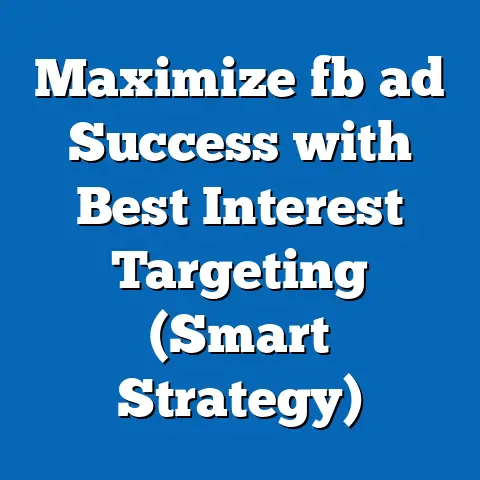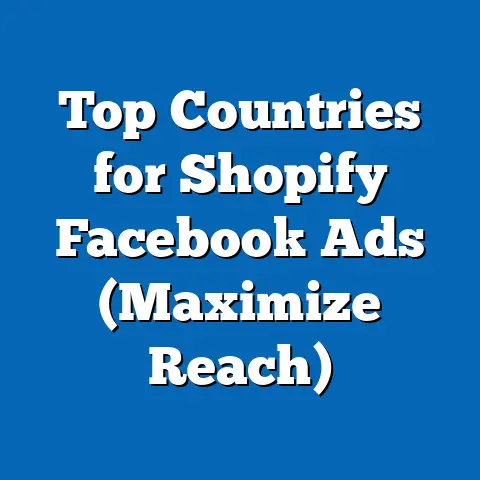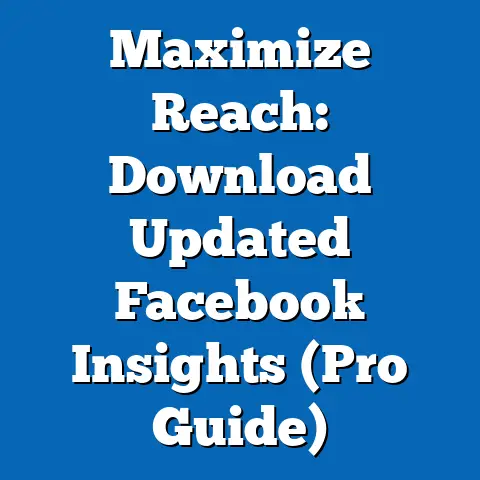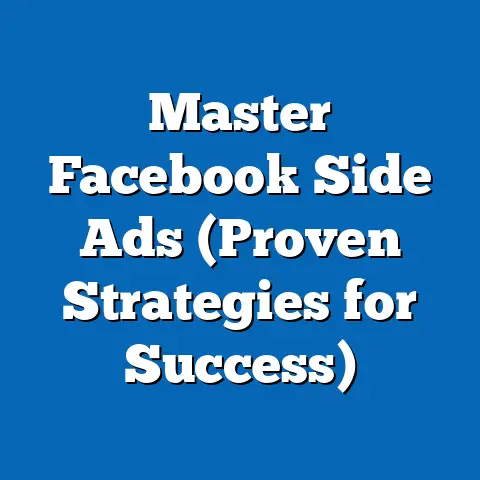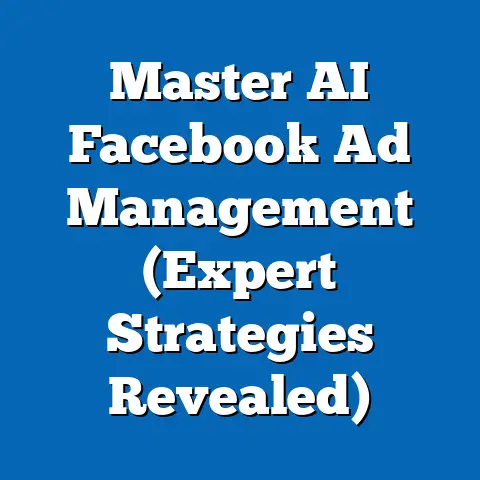Boost ROI with Multi-Advertiser Facebook Ads (Expert Tips)
As a digital marketing expert, I’ve seen firsthand how the landscape of online advertising is constantly evolving. To truly thrive, businesses need to be innovative and collaborative. That’s where multi-advertiser Facebook ads come in. These aren’t your typical solo campaigns; they’re strategic partnerships designed to amplify your reach and, most importantly, boost your return on investment (ROI). In this article, I’ll share expert tips on how to effectively implement multi-advertiser campaigns, so you can maximize your marketing efforts, connect with wider audiences, and ultimately drive sales.
Understanding Multi-Advertiser Facebook Ads
Multi-advertiser Facebook ads are a collaborative advertising strategy where two or more brands partner to run a single ad campaign. Think of it as a marketing power-up! Instead of each company running its own separate ads, they pool their resources and expertise to create a campaign that benefits everyone involved.
How do they differ from traditional single-advertiser campaigns? Well, in a single-advertiser campaign, you’re solely responsible for the entire budget, creative development, and targeting. With multi-advertiser ads, these responsibilities are shared, leading to a more efficient and impactful approach.
The benefits of this advertising strategy are numerous:
- Shared Costs: This is a big one, especially for smaller businesses. By splitting the ad spend, you can access more premium placements and reach a larger audience without breaking the bank.
- Access to Diverse Audiences: Each brand brings its own established audience to the table. This cross-pollination of audiences can introduce your products or services to potential customers who might not have otherwise encountered them.
- Enhanced Creative Collaboration: Brainstorming with another company can spark fresh ideas and result in more engaging ad creatives. Different perspectives can lead to innovative campaigns that resonate with a broader audience.
I remember working with a local coffee shop and a bakery. Individually, their Facebook campaigns were decent, but nothing spectacular. We suggested a multi-advertiser campaign showcasing the perfect pairing: coffee and pastries. The ad featured mouthwatering photos of both, highlighting the “perfect morning ritual.” The results were fantastic! Both businesses saw a significant increase in foot traffic and online orders, proving the power of a well-executed multi-advertiser campaign.
Setting Up Your Multi-Advertiser Campaign
Now that you understand the potential of multi-advertiser ads, let’s dive into the practical steps of setting up a successful campaign:
Step 1: Identify Compatible Brands
This is where the magic begins. You can’t just partner with any company. You need to find brands with complementary products or services that appeal to a similar target audience.
- Think Synergistically: What products or services naturally go together? Consider partnerships between fitness apparel brands and health food companies, or travel agencies and luggage retailers.
- Research Potential Partners: Look for companies with a strong brand reputation, a similar target audience, and a compatible brand aesthetic.
- Don’t Be Afraid to Reach Out: Once you’ve identified potential partners, don’t hesitate to contact them. Explain the benefits of a multi-advertiser campaign and propose a collaborative strategy.
Step 2: Establish Clear Objectives
Before you start designing ads, you need to define your shared goals. What do you want to achieve with this campaign? Increased brand awareness? More website traffic? Higher sales?
- Align Marketing Strategies: Ensure that both brands’ marketing strategies align with the overall campaign objectives.
- Define Measurable Goals: Set specific, measurable, achievable, relevant, and time-bound (SMART) goals. For example, “Increase website traffic by 20% within the next month.”
- Communicate Openly: Regular communication is crucial to ensure that both brands are on the same page and working towards the same objectives.
Step 3: Develop a Unified Creative Strategy
This is where your creative juices come into play. You need to develop ad creatives that reflect the partnership while maintaining each brand’s unique identity.
- Find Common Ground: Identify the core values and messaging that resonate with both brands and their target audience.
- Create Cohesive Visuals: Use consistent color palettes, fonts, and imagery to create a visually appealing and unified ad aesthetic.
- Craft Compelling Copy: Write ad copy that highlights the benefits of both products or services and encourages viewers to take action.
I once consulted on a campaign between a local bookstore and a tea shop. They decided to showcase the joy of reading with a cup of tea. The ad featured a cozy image of a person reading a book with a steaming mug of tea beside them. The copy emphasized the relaxing and immersive experience of reading, encouraging viewers to visit both the bookstore and the tea shop. The campaign was a huge success, attracting book lovers and tea enthusiasts alike.
Targeting and Audience Segmentation
Targeting is the key to reaching the right people with your multi-advertiser ads. Facebook’s advanced targeting options allow you to reach specific demographics, interests, and behaviors.
- Leverage Facebook’s Targeting Options: Utilize Facebook’s detailed targeting options to reach specific demographics (age, gender, location), interests (hobbies, passions), and behaviors (purchase history, online activity).
- Create Audience Segments: Segment your audience based on each advertiser’s specific goals. For example, you might create one segment for people interested in coffee and another for people interested in pastries.
- Ensure Overlap: While you want to target specific interests, make sure there’s some overlap between the audience segments to maximize reach and expose your ads to a wider pool of potential customers.
A/B testing different target groups is crucial to identify the most profitable segments. By testing different combinations of demographics, interests, and behaviors, you can fine-tune your targeting and ensure that your ads are reaching the right people.
I remember running a campaign for a local gym and a protein supplement company. Initially, we targeted a broad audience interested in “fitness.” However, after analyzing the data, we discovered that the most engaged segment was people interested in “weightlifting” and “bodybuilding.” By narrowing our focus to this specific segment, we saw a significant increase in ad engagement and conversions.
Budgeting and Bidding Strategies
The financial aspect of multi-advertiser campaigns requires careful planning and collaboration.
- Divide Costs Fairly: Determine how costs will be divided among advertisers. This could be based on the relative value of each product or service, or simply a 50/50 split.
- Set a Collaborative Budget: Establish a total budget for the campaign and ensure that both brands are comfortable with their respective contributions.
- Choose the Right Bidding Strategy: Facebook offers various bidding strategies, including cost-per-click (CPC) and cost-per-impression (CPM). Choose the strategy that best aligns with your campaign objectives and budget.
Optimizing ad spend is essential to ensure maximum ROI. Here are some expert tips:
- Monitor Performance Data: Regularly monitor your campaign performance data in Facebook Ads Manager.
- Adjust Bids Based on Performance: Increase bids for ads that are performing well and decrease bids for ads that are underperforming.
- A/B Test Different Ad Creatives: Experiment with different ad creatives to see which ones resonate best with your target audience.
- Refine Targeting: Continuously refine your targeting based on the data you collect.
Measuring Success and Analyzing Data
Tracking the success of your multi-advertiser campaign is crucial to understand what’s working and what’s not.
- Identify Key Performance Indicators (KPIs): Determine the key metrics you’ll use to measure success. This could include impressions, clicks, conversions, website traffic, and sales.
- Use Facebook Ads Manager: Facebook Ads Manager provides detailed analytics and reporting tools to track your campaign performance.
- Interpret Data: Analyze the data to identify successful ad creatives, audience segments, and bidding strategies.
- Make Informed Decisions: Use the insights you gain from the data to make informed decisions about future campaigns.
I always emphasize the importance of data-driven decision-making. Don’t just rely on gut feelings. Let the data guide your strategy. By carefully analyzing your campaign performance data, you can identify areas for improvement and optimize your campaigns for maximum ROI.
Conclusion
Multi-advertiser Facebook ads offer a powerful way to boost your ROI, expand your reach, and foster collaborative partnerships. By carefully selecting compatible brands, establishing clear objectives, developing a unified creative strategy, targeting the right audience, and optimizing your budget and bidding strategies, you can create successful campaigns that benefit everyone involved.
I encourage you to explore the potential of multi-advertiser Facebook ads and implement these expert tips in your own advertising efforts. Remember, collaboration is key to success in the ever-evolving world of digital marketing. By working together, you can achieve more than you ever could alone.

